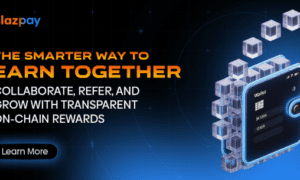Introduction
Ethereum has emerged as a powerhouse, enabling the creation of decentralized applications (DApps) and smart contracts. As developers delve into the Ethereum ecosystem, the importance of leveraging the right development tools becomes paramount. This comprehensive guide aims to provide developers with insights into the essential Ethereum development tools, facilitating a smoother and more efficient development process.
Ethereum Development Environment:
Creating a conducive development environment is the first step for any Ethereum developer. Tools like Remix IDE, an open-source web and desktop application, offer an interactive and intuitive platform for smart contract development. With features such as real-time debugging and a built-in compiler, Remix IDE streamlines the coding process, making it an ideal choice for developers.
Solidity Programming Language:
At the core of Ethereum smart contract development lies Solidity, a statically-typed programming language designed for developing smart contracts that run on the Ethereum Virtual Machine (EVM). Solidity’s syntax is similar to that of JavaScript, making it accessible for developers familiar with web development. By incorporating Solidity into their skill set, developers gain the ability to create secure and efficient smart contracts.
Truffle Suite:
For a comprehensive development experience, the Truffle Suite stands out as an indispensable set of tools. Truffle provides a development environment, testing framework, and asset pipeline for Ethereum. Developers can effortlessly manage their projects with Truffle, utilizing its features such as automated contract testing, migrations, and integrated scriptable deployment.
Ganache:
In the realm of Ethereum development, testing is a crucial phase. Ganache, part of the Truffle Suite, allows developers to create a personal Ethereum blockchain for testing purposes. With its user-friendly interface and the ability to simulate various scenarios, Ganache accelerates the testing phase, ensuring that smart contracts function as intended before deploying them on the mainnet.
Web3.js:
Interacting with the Ethereum blockchain programmatically is made possible by Web3.js, a JavaScript library that serves as a bridge between applications and the Ethereum blockchain. Developers can use Web3.js to build decentralized applications that interact seamlessly with smart contracts. Its robust set of functionalities, including contract instantiation and transaction handling, empowers developers to create feature-rich applications.
Infura:
To enhance the reliability of decentralized applications, developers often turn to Infura, a scalable and reliable Ethereum API. Infura allows developers to access the Ethereum network without the need to run a full node, simplifying the development process and reducing infrastructure-related challenges. Its high availability and ease of use make Infura a valuable tool for developers focusing on application scalability.
MetaMask:
User adoption is a critical factor in the success of decentralized applications. MetaMask, a browser extension wallet, facilitates seamless interaction between users and Ethereum-based applications. Developers can leverage MetaMask to enable users to manage their digital assets and interact with DApps directly from their web browsers, enhancing the overall user experience.
OpenZeppelin:
Security is a top priority in the Ethereum ecosystem, especially when dealing with smart contracts that manage digital assets. OpenZeppelin provides a library of reusable, secure smart contracts that developers can integrate into their projects. By leveraging OpenZeppelin, developers can significantly reduce the risk of vulnerabilities and ensure the integrity of their smart contracts.
Etherscan:
Monitoring and verifying transactions on the Ethereum blockchain is made simple with Etherscan. This blockchain explorer allows developers to view and analyze transactions, smart contracts, and addresses. Etherscan’s comprehensive features, such as real-time tracking and contract verification, provide developers with the tools they need to audit and optimize their projects.
Ethereum Improvement Proposals (EIPs):
As Ethereum continues to evolve, developers must stay informed about proposed changes and upgrades to the network. Ethereum Improvement Proposals (EIPs) serve as a formalized process for introducing new features or improvements. By actively participating in the EIP process, developers can contribute to the growth and enhancement of the Ethereum ecosystem.
Conclusion:
Navigating the world of Ethereum development requires a deep understanding of the tools available. From creating a conducive development environment to ensuring security and scalability, developers can empower themselves with the right set of tools. As the Ethereum ecosystem continues to expand, staying updated on the latest tools and best practices is essential for developers aiming to build innovative and reliable decentralized applications. By incorporating these tools into their workflow, developers can contribute to the ongoing evolution of blockchain technology, shaping the future of decentralized applications on the Ethereum network.



































